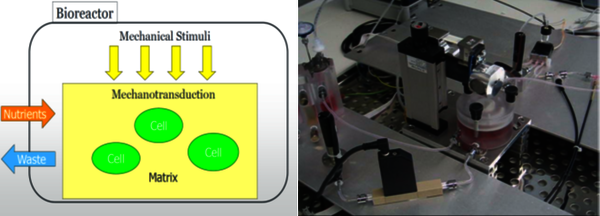8W130 - Tissue engineering
- Introduction to tissue engineering: definition and historical prespective
- Limitations of existing biomaterials solutions. Highlighting the important medical needs.
- Cell biology
- cell types, stem cells, intracellular structures (membrane, cytoskeleton, nucleus) important signalling molecules
- Biochemistry and concept of molecular biology
- Cell growth and differentiation pathways, mechanisms and control, extracellular matrix, epithelial mesenchymal interactions, matrix molecules and their ligands, gene expression, concept of mechanotransduction.
- In vitro control of tissue development
- cell culture and specific needs for different cell types, growth factors, models for tissue engineering, physical characteristics for transplantation, cell function in constructs; influence of mechanical, chemical and extracellular matrix environment.
- Construct Technology
- 3-D structure, multi-cellular systems, transport of nutrients and metabolites in tissue engineering, bioreactors for tissue engineered constructs, preservation of tissue engineered constructs
- Clinical applications - anatomy, physical and biological characterisation, cirtique of tissue engineered products
- skin, cardiovascular substitutes, cartilage, bone, ligaments/tendons
- Tissue Engineering Industry
- future prospects for growth, worldwide perspective, regulatory affairs FDA
- Understand the multidisciplinary principles underpinning tissue engineering
- Appreciate scientific principles that underlie a series of strategies to repair specific tissues
- Appreciate challenges associated with tissue engineering industry.
